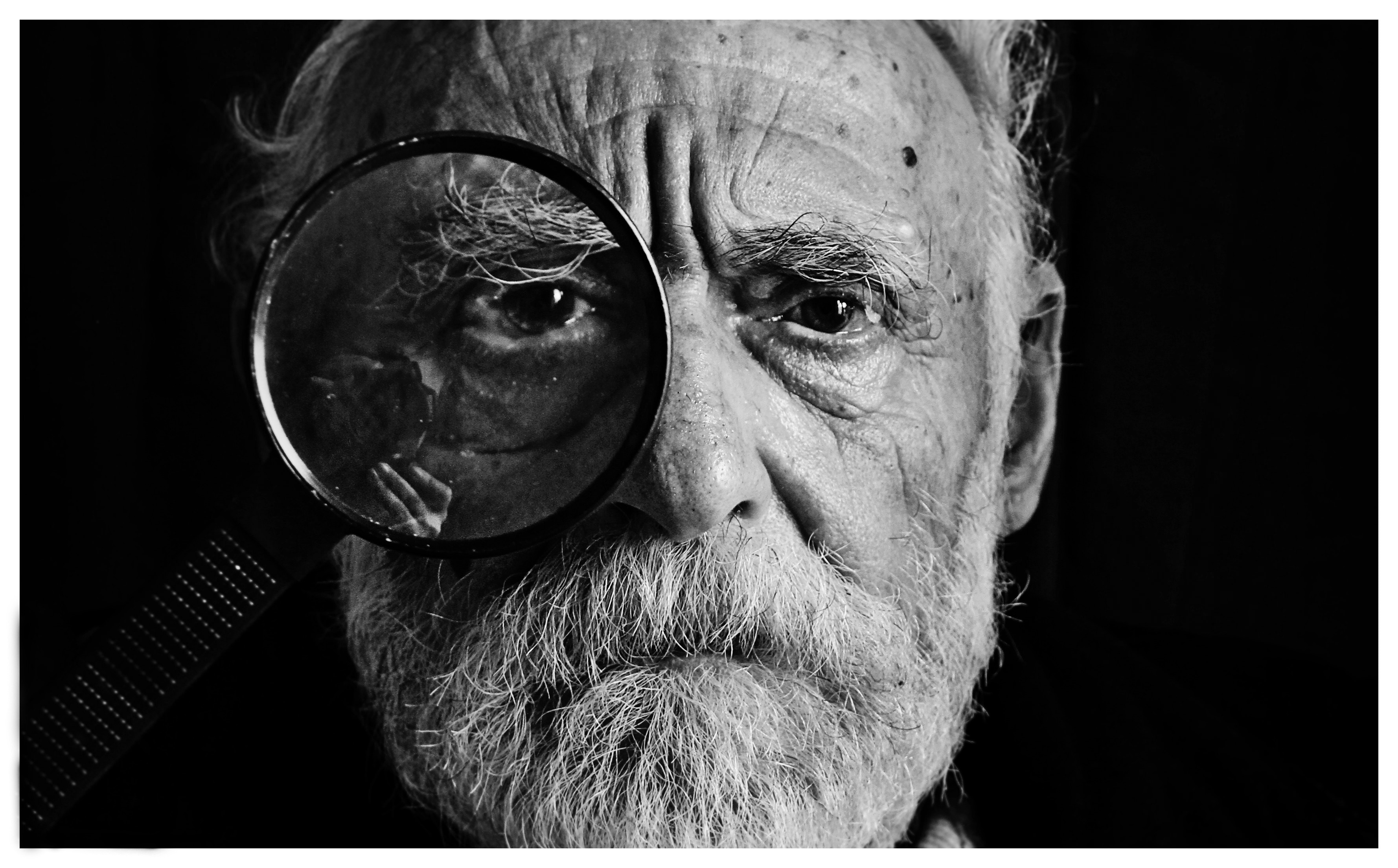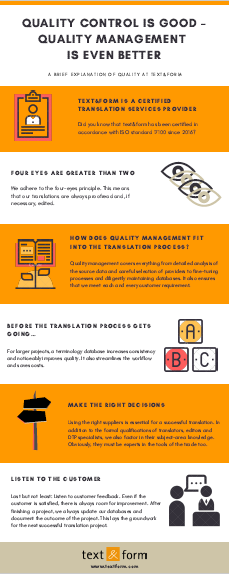 Hand over heart: Which is more important to you – good quality or low price? For translation, client surveys always reveal the same picture: Clients would like to have a competitive quote. However, when calculating price, one should not sacrifice quality. In other words, a low price is great, but the best price doesn’t matter if the quality is bad.
Hand over heart: Which is more important to you – good quality or low price? For translation, client surveys always reveal the same picture: Clients would like to have a competitive quote. However, when calculating price, one should not sacrifice quality. In other words, a low price is great, but the best price doesn’t matter if the quality is bad.
Quality is important. I think we can all agree on that. Yet how do we obtain it? Quality control and checking are different components of quality assurance. For this reason, DIN EN ISO 17100-certified translation service providers like text&form operate on the “Four-Eye Principle” – following the motto, four eyes are better than two. From William Edwards Deming, the father of “Total Quality Management,” we know that quality wants to be generated, rather than be inspected into a product. This means that to achieve high quality, the entire production process must be planned and guided, not just the last phase before delivery to the client.
Quality control, quality assurance, quality management – these terms are frequently used interchangeably or taken as synonyms. What do they actually all mean? Quality control measures are used when managing the production process. With quality assurance, we want to ensure that the quality control measures have actually functioned. We achieve quality, in Deming’s sense of the word, with a comprehensive “Total Quality Management System,” in which all measures and divisions are integrated and not only limited to separate areas.
Quality Management for Translation
What does that mean for a service like translation? Where should you stand?
The starting point is the offer phase; even at this point we listen to the client as closely as possible to offer them the exact service(s) they need. But what happens if the client doesn’t know what is needed? This is not an unusual occurrence in the translation world. It is paramount to show the (potential) client what they can expect for their money, openly and traceably. This simply ensures that they can steer clear later of dissatisfaction and false expectations.
If the offer becomes an order, guard against later surprises with careful data entry checking and analysis. Only once the scope has been exactly determined will the project manager establish the workflow and coordinate the schedule. With large projects it is preferable to first perform a terminology extraction and have the relevant terminology translated in advance. Thus the quality already increases noticeably in the run-up, because the terms are used consistently by all parties. If there are previous versions of the material to be translated, an appropriate preparation and pre-translation could not only further improve the consistency, but also save money.
When it comes to the actual translation, it is essential to put together suitable teams. It is therefore not only important that the formal qualifications of the translator and other suppliers match, but also their technical know-how and specialization. An excellent technical translator can leave much to be desired with a marketing translation – conversely a phrasing genius rarely has the technical knowledge to precisely convert a technical document. An experienced project manager knows this, and considers these skills when choosing a translator. The project manager will also be careful in their choice of revisers and DTP experts.
Modern Technology and Well-Planned Quality Assurance Make a Strong Team
The translation process also requires the choice and mastery of the right translation tools. Only if all parties master the (most helpful) technologies will sources of error be minimized and efficiency be maximized. Once the translation is done, the actual quality assurance follows, i.e. the editing – also known as revision in the ISO 17100 terminology. Normally, a final check completes the process. After revision and the final check, the project manager can deliver the translation via the agreed-upon method to the client. Those who want to be on the safe side choose file transfer solutions designed for the secure transmission of data or, if available, a separate Customer Portal.
An important, quality-improving component of the production cycle is customer feedback. Here you must listen carefully. Even if the customer is completely satisfied, there is always the potential to further optimize the workflow. It can be a challenge to tease it out and make sense of it, but it’s worth it. When the project manager documents the evaluation results and carefully updates their databases after the conclusion of a project, they already have a good foundation for the next successful translation project.
Keep an Eye on the Complete Production Cycle
In conclusion: To achieve high quality, you must keep the entire production cycle in mind – it doesn’t matter whether the product is a toothbrush or a translation. There is, however, at least one difference: The quality of a translation is – in addition to the above aspects – still dependent on the quality of the source text. If clients and translation service professionals work hand-in-hand from the beginning, and when authors take note of the basic rules for translation oriented writing when translating texts, then everyone has already done a lot right to achieve high translation quality.


